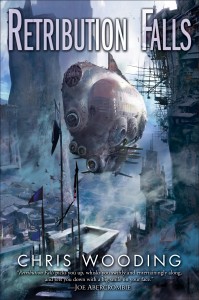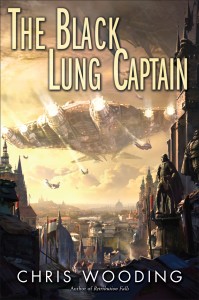So I was sifting through my documents folder on my Hyper Awesome iMac of Destiny (+1, +5 vs Books) and I came across an old article that I did for Sci-Fi Now magazine sometime last year. So I figured I’d stick it up here to keep you guys happy till I finish my book 
This may help to illustrate why I still write books for kids as well as adults…
PS, right at the end of Iron Jackal. Will be done in a couple of weeks, then I’ll edit the hell out of it, then it’ll go to my editor for some proper editing. But all the production machinery is geared up and ready to go, so we’re still looking good for August.
And now, for your edification:
Young Adult Genre Fiction: Who Needs It?
SF, fantasy and horror for young adults is notoriously tricky territory for publishers.
Many advanced readers have already progressed to adult books by the time they reach secondary school. Plenty of the most popular genre writers are well within the grasp of teenagers anyway. So is it actually necessary to have genre books that are specifically aimed at younger readers? Is there really any point in dividing our shrinking share of the bookshelves further, just for the sake of a small, rapidly shifting market that spans a few years at best?
Well, yes. Here’s why.
That thin sliver of years between childhood and late adolescence is fertile ground for the genre writer. Yes, you might have to forego your tendencies towards megaviolence and ultra-porn, and you’ll never be able to write an epic of Erikson-esque complexity. Yes, you’ll be forced to limit the age of your protagonists. But your reward will be freedom of a different kind.
A publisher of young adult books doesn’t have to deal with the genre prejudice of the adult market. Children’s books are divided on the bookshelves by age, not by subject. Genre works are mixed in with the others where the browsing public can see them. My own YA books – a jumble of SF, fantasy and horror – sit happily next to Jacqueline Wilson’s stories for pre-teen girls. In contrast, you’d have to visit the Fantasy/SF section to find my adult-market books, which you wouldn’t do if you weren’t already a genre fan.
There’s a similar lack of boundaries within the YA genre field. There’s no high fantasy or hard SF, no New Weird or urban fantasy. Genre definitions mean nothing. You want to write a steampunk post-apocalypse adventure full of cities that drive around eating each other? Or a book about a child passing through alternate realities in search of a weak and feeble God? Or a dystopian sci-fi about an underground city that’s running out of light? Go for it!
Such ideas would be risky prospects at best in the adult market. Books that don’t fit into easily recognisable pigeonholes traditionally struggle in comparison to those that do. Straight-out fantasy and SF are much safer bets than something genre-straddling and unfamiliar. Just look at the big sellers in the field if you need evidence.
Not so the YA market. Mortal Engines, Northern Lights and The City of Ember went on to sell bucketloads. And it’s books like these that prime our next generation of adult genre readers. If we’re ever going to break down the mentality of pigeonholing, if we’re ever going to tempt readers into that vast, scarcely explored territory between Tolkien and Asimov, then the YA market is the best place to start.
YA genre fiction isn’t interested in the rules and regulations of the adult world, which is exactly why we need it most. It’s innocent, unjaded, full of possibility and promise. And, just like the readers it represents, it might even have a thing or two to teach the grown-ups.




 Lesson learned…
Lesson learned…















